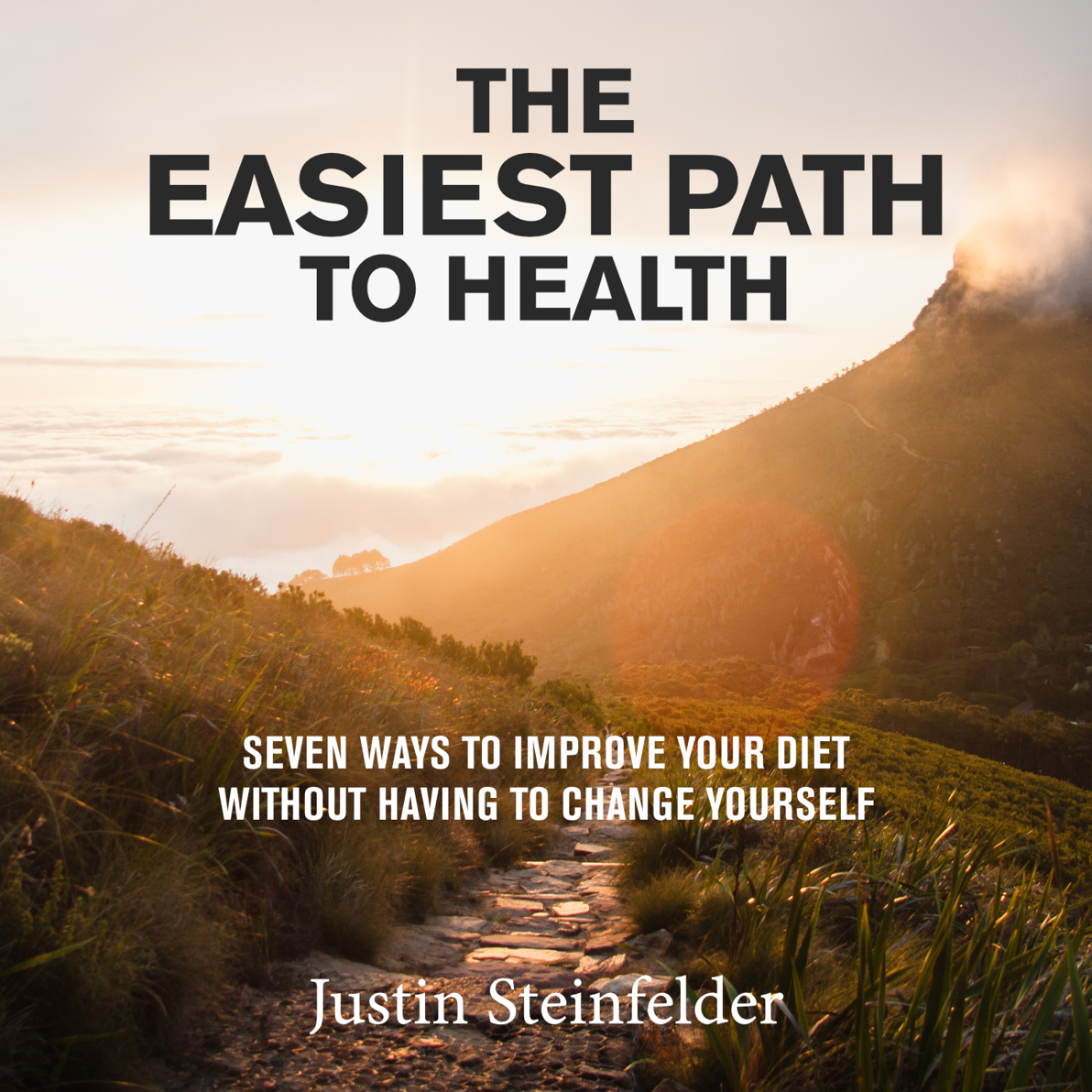The Situation
You’re a reasonably healthy eater who has eaten well all week.
The problem: It’s Friday and you’ve got a holiday party tonight. In all likelihood, the food isn’t going to be healthy— some version of French fries, dumplings, and tempura rolls.
Is there anything you can do before the party that will make you less likely to stray from your diet?
Yes.
In this post, I’ll give you three. All research-backed, personally tested, and simple to implement. The key to all of them is anticipation and action. They are tactics done beforehand that push you towards a healthier course of action relieving in-the-moment willpower from its duties.
To get right to the good stuff, skip ahead to #1. But to understand why they work—and thus, improve your chances of successfully applying them—you’ll want to be familiar with the underlying concept.
It’s called, “Preemption.”
Preempt Your ‘Now’ Brain

In my article, “How To Get Yourself To Eat Healthy (or do anything),” I talked about the idea of the Now and Later Brains.
The basic point is that your mind works on two tracks. One is impetuous, reactive, childlike. The other is deliberate and thoughtful. The way to get yourself to do hard things—things you know you should do but don’t feel like doing— is to use the Later Brain to outsmart your Now Brain.
There are two ways to do this.
The first is the The Hard Way. This is a group of very effective and systematic tools like creating a detailed action plan with goals, monitoring tactics like calorie tracking, and reviewing progress.
The problem: these takes too long. Your Now Brain will resist them. Overcoming that resistance can be done (and ultimately must be) but it takes months and years, and time is something we don’t have. We’ve got a party to attend.
Luckily, there are some shorter-term tactics to keep you afloat in the meantime: The Easy Way.
The Easy Way tactics do something specific. They serve to relieve your Later Brain of responsibility by limiting—beforehand—its range of choices, desires, or focus—they “Prempt” it. Instead of using in-the-moment willpower, or the longer routes of self-control, you remove choice. Rather than add skills, you subtract options, limit focus.
We’ll discuss three, starting with one that was first discovered by an economist in the course of a nuclear threat: “precommitment”
(1) The Precommit

The Soviet “Deadhand”
In 1967 the US and Russia were in the midst of the Cold War. To avoid the war turning from “cold” to nuclear, the Soviets hatched a clever scheme.
Instead of waiting for the U.S. to attack them, and then threatening to respond with nuclear action, they took the decision out of their own hands in advance. They set up a system whereby if their sensors detected nuclear activity coming from the West, one hundred nuclear warheads would automatically fire towards the US.
This practically ensured that the Pentagon wouldn’t—couldn’t— do anything. Because the Soviets took themselves out of the equation, and the decision was already in place, any nuclear action the US took would be suicidal.
“The Deadhand” would produce automatic consequence.
The Science
The essence of these tactics,” said Nobel prize-winning economist Thomas Schelling, who studied strategies such as these “is some voluntary but irreversible sacrifice of freedom of choice. They rest on the paradox that the power to constrain an adversary may depend on the power to bind oneself.
If all options are removed except one, Schelling reasoned, that’s what must happen.
Later in his career, Schelling migrated his theories from art of war to ‘the art of personal management.’
All of us have little tricks we play on ourselves to make us do the things we ought to do. We place the alarm clock across the room so we cannot turn it off without getting out of bed. People who are chronically late set their watches a few minutes ahead to deceive themselves.
Schelling called these tricks of “precommitment.” Moves the Later Brain made beforehand to bind the Now Brain to a desired action.
Everybody behaves like two people, one who wants a lean body, and another who wants dessert.
Here are some precommitment tactics to avoid the latter.
The Tactics
Abstain
The most effective—and probably least fun— tactic is abstinence. To precommit to your diet in your house, for example, only buy the food that you want to eat— kale, lentils, and blueberries–and nothing you don’t.
At the party, you can’t do that, but you can abstain at different levels. For instance, you could make a contract with yourself—literally write it— that you’re not going to eat anything at the party, healthy or not, and then take that piece of paper in your pocket, or have your partner watch you write it.
Second, you could not go into the areas where they serve food. There tends to be a central area for this, like a buffet table. Simply commit to yourself that you will not go near it.
Advance
The Advance makes the bad action so costly, that the Now Brain perceives more pain than from the good act.
For example, you can strengthen that abstinence contract with your partner or yourself by pre-committing some sort of wager along with the written piece of paper. Rather than just your word, you now stand to lose money.
Outside of the party, pay a trainer $1000 in advance to ensure you go to the gym, or give a strong-willed friend $100 and tell her to spend it if you don’t meet her for your weekly hike.
Amplify: Make Public Commitment
John Foley, CEO of Peloton, was asked his advice for young entrepreneurs. Foley didn’t say anything about marketing or sales or product. He advised to commit to starting your business publicly.
If you tell people you’re going to do it, you have to deliver.
A way to do this in your general diet: commit to weekly weigh-ins on your Instagram or in a text chain. Allow your friends to hold you accountable. At the party, you tell the other guests, your social following—some group that can hold you accountable.
And if none of those work, move to tactic #2: The Pregame.
(2) The Pregame

You might be aware of the social drinking routine 20-somethings do called the “pregame.”
You and your friends meet at an apartment before the bar. Just like an athlete has a pregame warm-up, this is you ‘warming up’ for the night’s festivities. Except instead of calisthenics, you’re downing ‘warm-up’ cocktails, to make standing in a circle and saying dumb things seem less weird.
A similar technique can be applied to diet, though in an arguably far less cool way.
Again, you’re going to that party. You don’t know what food is going to be there, but you can bet your avocados it’s not going to be good for you. No one is going to get fired up about steamed tofu skewers and roasted broccolini (actually, that just got me pretty excited).
Instead of taking that risk, you pregame— you eat the healthy food before you go. That makes you full and less likely to overeat while you’re at the party.
But specific foods work best.
The Science
The key is to the Pregame is to eat food that’s not only healthy, but filling. Target foods that are high in two things: (1) fiber and (2) water.
Did you know that a lot of fruits and veggies are made of mostly water? An apple for example is 85% water. Your stomach is only so big (about four cups, or 24 oz) so filling it up with water is smart. An apple is 3-4 oz of water, same with a cucumber. And due to this (and its fiber) several studies have shown that eating them before a meal can significantly reduce intake at that meal, and even beyond that meal.
Second, fiber. Fiber, which is the gelatinous stuff that makes walls in plant-cells, has been shown to increase satiety.[2] You would have already gotten a good start with the water-logged fruits and veggies (an apple has 4.5 g fiber), but a bowl of split-pea or lentil soup would push you over the edge.
The Foods
Simply eat some healthy, filling food, before the party, when you have complete control. Just like you would do with alcohol, you’re reeling in the Now brain to prevent any rash moves.
- Fruits: apples, tomatoes, oranges, berries. All less than 100 calories, high in water, high in fiber, or both.
- Veggies: cucumbers, broccoli, cauliflower.
- Soup: split pea. Amy’s is 200 cals, 6 grams of fiber, 14 g protein. It’s hard to be that hungry after that.
Of course, if you’re fresh out of split-pea soup, you an always use tactic #3: The Prime.
(3) The Prime

The Situation
At a seminar I once attended, a psychologist explained the key issue with diet in a hilarious way.
Here’s y’alls problem: ya want two things at the same time. Ya’ll want to be thin, but ya love eatin’ cake.
The problem with dieters is exactly that: conflicting of goals. On the one hand, you want to enjoy your life, and eat whatever food you want. On the other hand, you want to lose weight.
In certain scenarios, there’s no conflict between these two goals. When you’re at the gym, you have no problem channeling your weight-loss goal. On ‘cheat-day’ or Thanksgiving (i.e. national cheat day), you have no issue focusing on the enjoyment goal.
But how about just eating out with friends on a Wednesday night? That’s where you’d rather stick to your diet goals, but often succumb to peer pressure, and pizza.
And that’s where you need the -pre-antidote to peer pressure— The Prime.
The Science
Harvard researchers split people into two groups.
Both groups ate lunch, the contents of which were recorded. But before the Group 1 ate, they were shown posters of fit people in various exercise- and health-themed scenes. Group 2 just ate normally, no pictures.
The result? The fitness poster group ate substantially less (and healthier) food than a group that was not shown the poster.
The surprising finding is this: you can take steps to activate—to “prime”— certain moods or actions, either subconsciously or consciously, making it more likely you’ll act in those specific ways.
Readers familiar with this material will know that priming was called into question in the famous “replication crisis” in the early 2010s. However, this 2016 meta-analysis showed a significant and robust effect from priming, especially goal-related priming.
The bottom line: priming can lead people to stick to their diet goals.
The Tactic
Before going to the party, take a minute for some Prime Time.
For my own priming, I quickly write a few sentences on a piece of paper recalling my goals before eating out. It takes all of 2 minutes, and, although anecdotal, it’s surprisingly effective.
While you’re writing—another thing that’s been shown effective is rather than writing a statement, pose it as a yes or no question. “Will you stick to your goals and eat healthfully tonight?” Then write an affirmative answer.
Summary
There are actions you can take before an unhealthy situation to avoid a splurge on your diet. They take a slight amount of planning, but they also make an instant impact. Learn one at a time, and then, overtime, stack them all for the strongest results.
- The Precommit. Either restrict your options to the only one your Later Brain would be proud of by, e.g. only bringing healthy, low-calorie foods to the picnic. Or, make not doing the healthy option so undesirable, painful or costly that doing it becomes easier in the moment (e.g. such as when you pay a lot of money upfront on a gym membership).
- The Pregame. Before going to the party, fill up on healthy, high-fiber, high-water, low calorie foods. These will keep you full and also—gross side note— regular. Pregame fiber = postgame dump.
- The Prime. Before the party, look at something— a picture, a video, a book, or maybe best, a sentence you write in question form— that brings to mind your long-term goals.
That’s it, party people.
Besos,
Justy
[2] https://www.mdpi.com/2072-6643/14/19/4214


